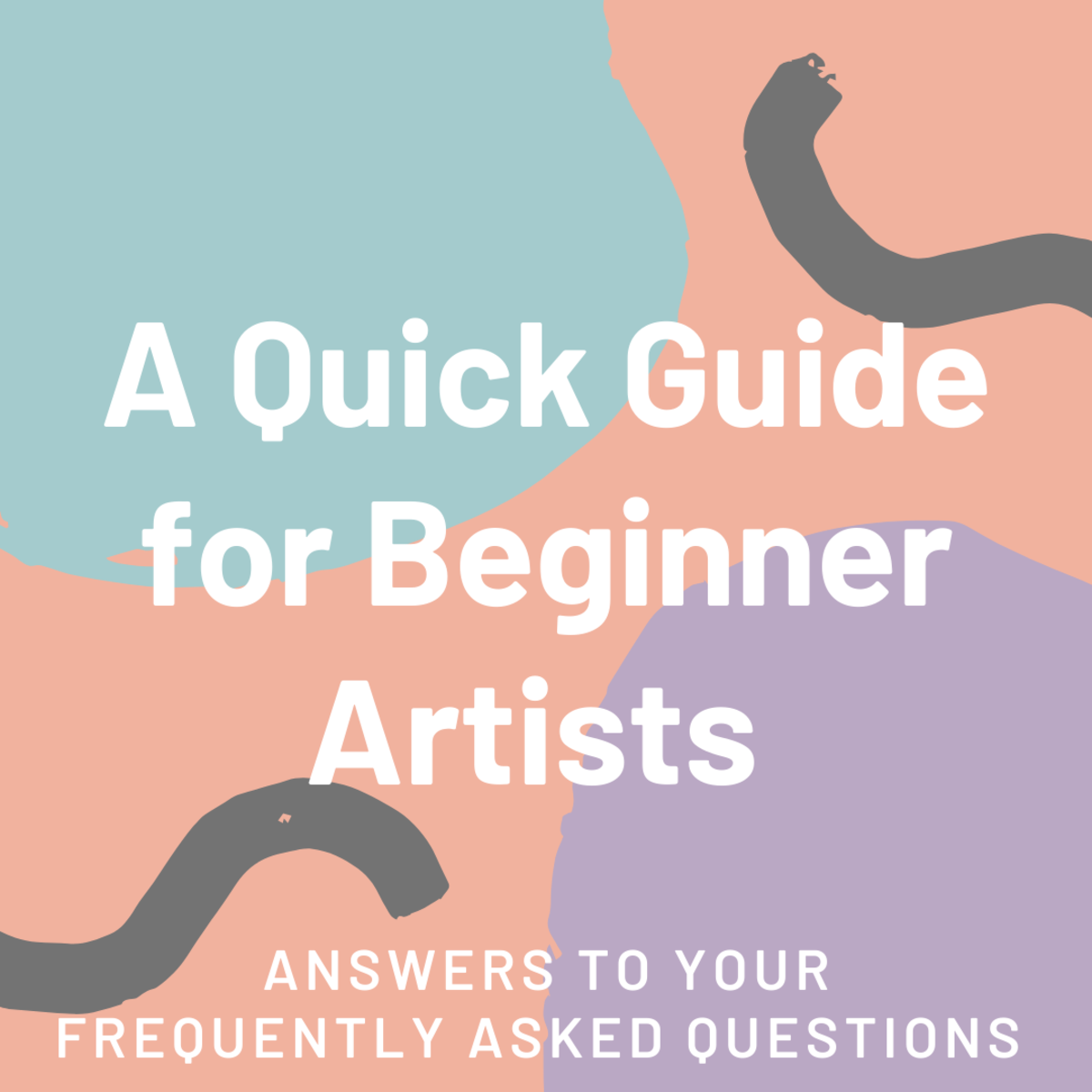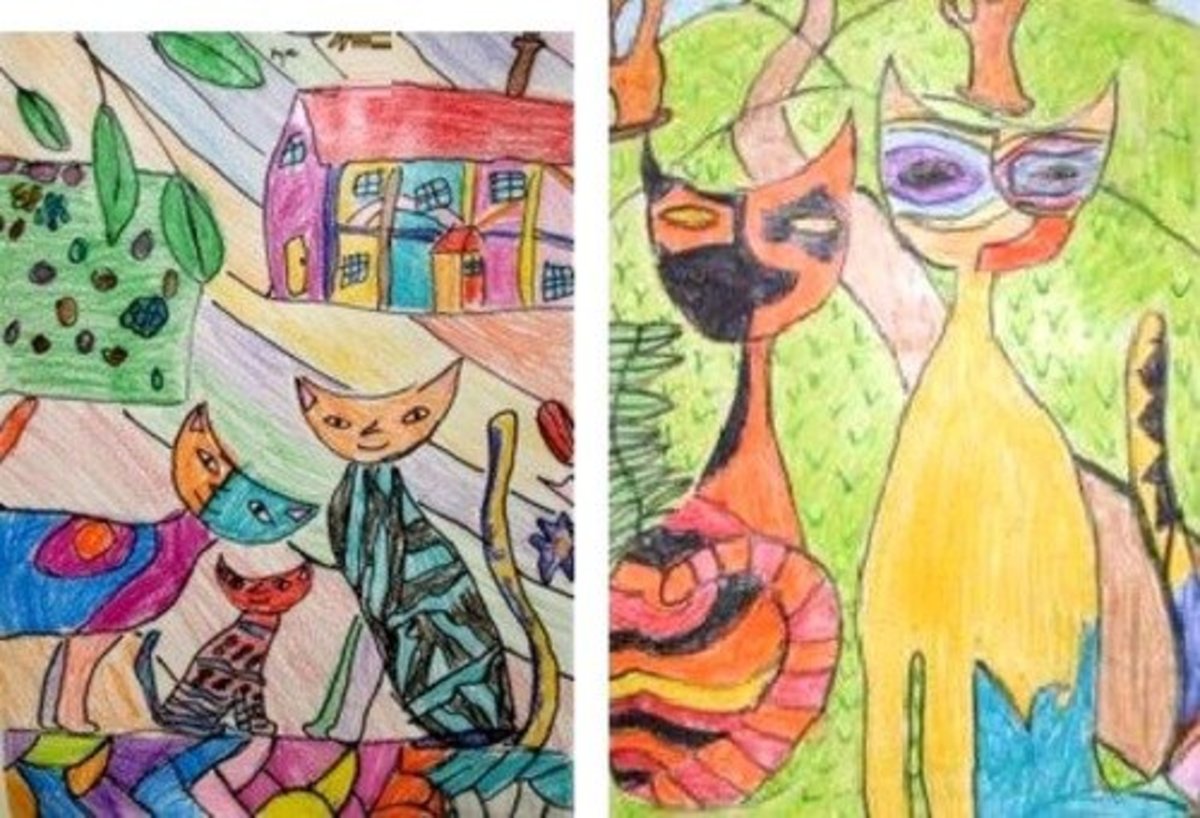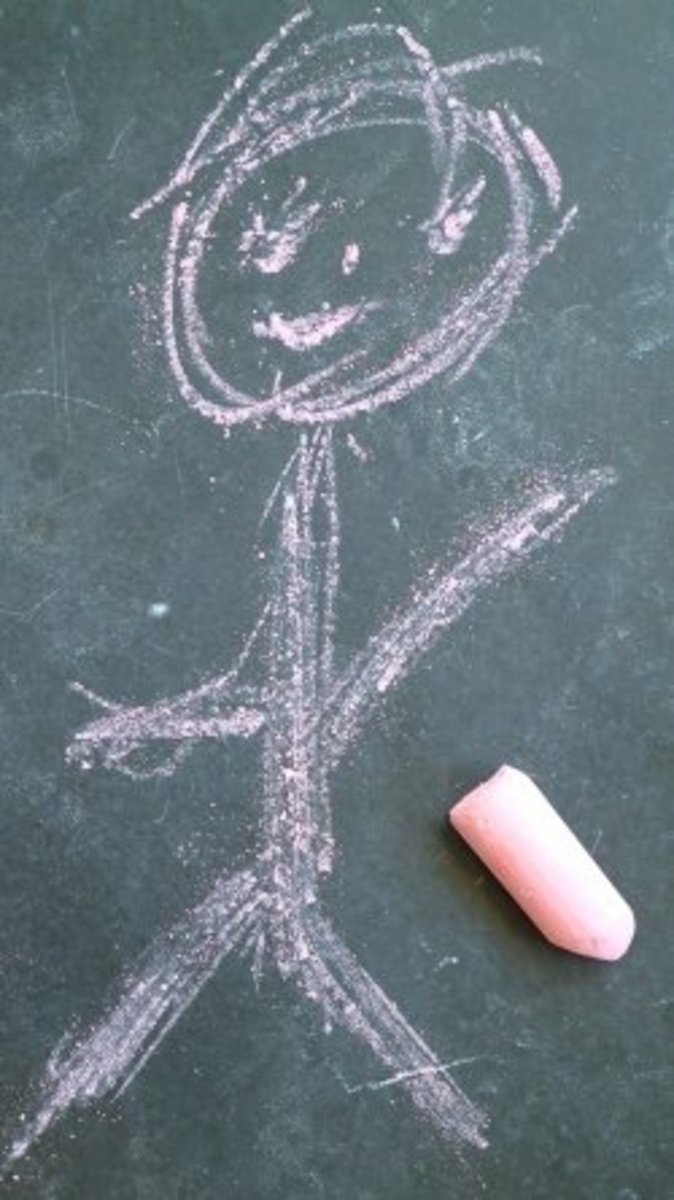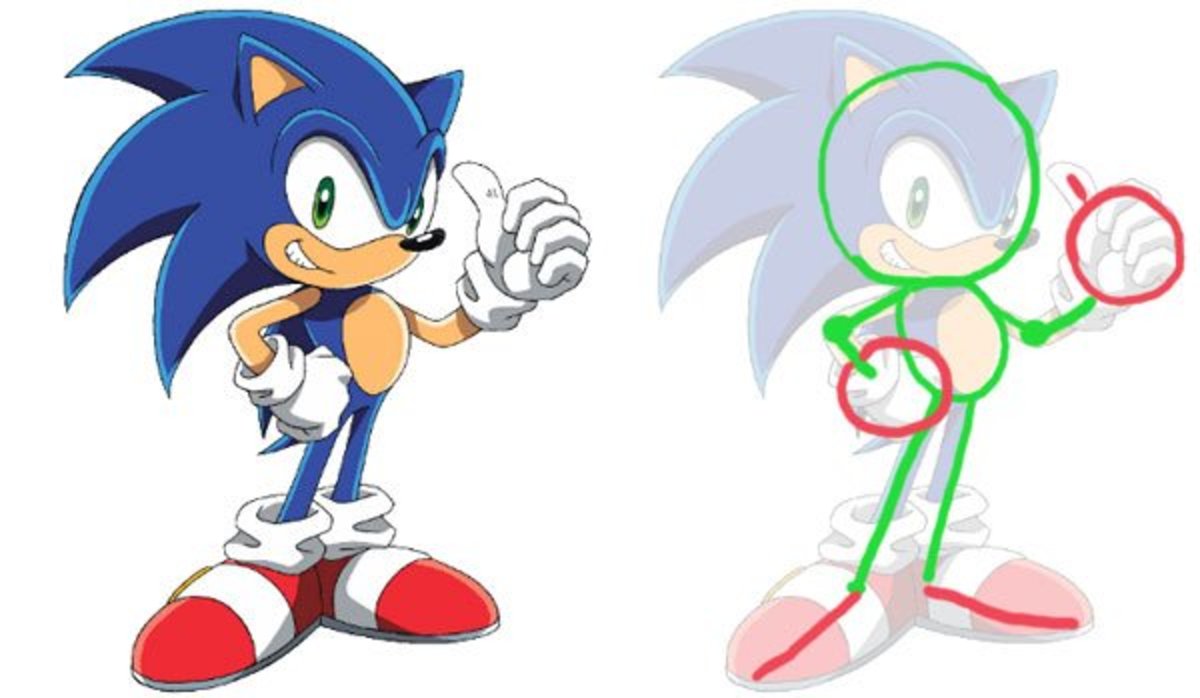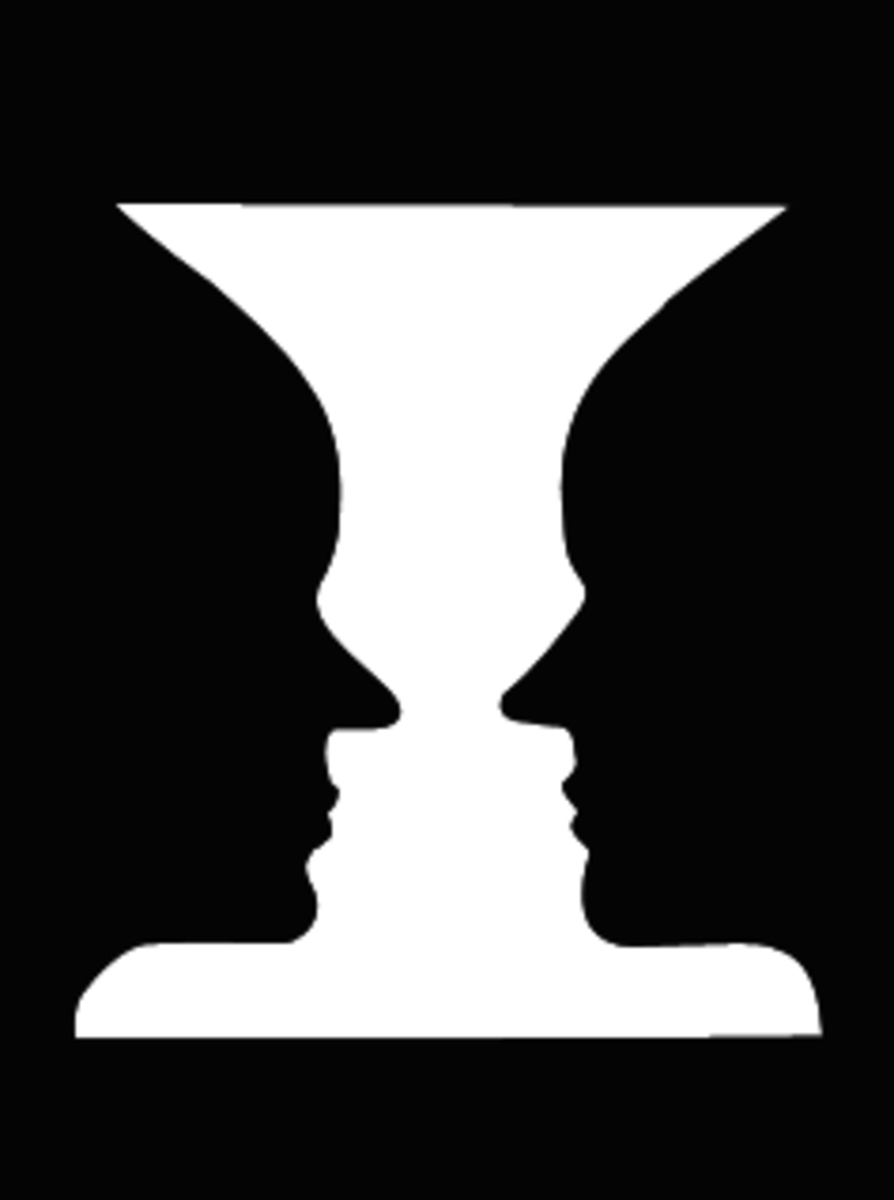Figure Drawing is Important in Today's Art
Self Portrait in Watercolor

Why Figure Drawing is Important
Figure drawing is as important today as it ever was for artists. It can help even for landscape and animal artists. Figure drawing teaches good observation and sketching, it's very easy to see what even minute errors cause in the way of distortions and it is the best way to break down the social filter and learn to see the way artists do.
Most people interpret and filter what they see through its social meaning. They look at a human being and read the cultural signals of clothing and hair style, read expressions and body language in an instinctive way. Some disabilities can impair this capacity with disastrous consequences) and then if they try to draw a face -- will draw a smiley or something like that which abstracts it down to the expression without any accurate proportion or details.
Two spots and an upturned crescent mean the same thing to a human child anywhere in the world.
But an artist must look at things the way they really are and not by symbology. An artist has to see the actual shape of the mouth is not an upturned crescent even in a smiling mouth, has to tell that the adult head is only a seventh of the height of the person and other proportion details -- or the drawing won't look real. My self portrait above is as recognizable as a photograph because I didn't change or hide the weird things about my face.
My face is long and narrow, my eyes a bit small and narrow, nose long and sharp, forehead short. There are a number of features in my face that aren't standard or classic. This is true of all faces -- and true of some of the best looking people. These differences, both in structure and in expression, create character and make a person recognizable.
In the same way, every tree, mountain, cat, dog, horse, mouse or flower is that unique and individual. The angle you look at the subject of your drawing is unique and changes how it looks. The direction of the light gives it depth and changes how it looks. Figure drawing teaches an accuracy of observation that leads to being able to draw or paint any subject there is. From there, understanding abstraction makes more sense.
This way of seeing like an artist means a complete transformation of perception. I can still remember the difference between what I saw looking at faces before and after I learned to do portraits. I'm surprised I was able to recognize anyone at all before I learned to draw people.
Everything you need to learn to be able to draw anything else can be learned by observing and drawing human beings. They are the most common subject for drawing that anyone ever sees, and they are one of the top subjects in art that people are interested in seeing and buying.
Abstract and nonfigurative art has been popular through the twentieth century, but figurative styles including photorealism have been gaining ground as the art world gets tired of all art resembling the art that was first intended as a rebellion against a stuffy artistic elite.
If you know how to do figurative drawing well, then your skills at creating nonfigurative art will be stronger and deeper. You also won't be caught short if the style or your mood changes and you won't be limited to drawing only copies of your previous successful art. Sadly, sometimes artists succeed commercially before they've learned the full repertory of artistic skills.
They became locked into the styles that made them famous and did not continue learning, which loses a lot of the joy of art anyway. Figure drawing is a powerful, important skill that can help any artist improve any style of art and it will also improve the artist's perceptions in life.
I find it much easier now to tell when people are lying -- when their eyes aren't smiling and their mouths are, the distortion is very obvious where it wasn't before. Figure drawing continues to be important throughout life because a real master is forever a student, always reaching, experimenting, learning. There is always something new and cool to discover in art, that's what makes it a satisfying profession.
How to find models for Figure Drawing
The best model you have available is yourself. You're the only person with enough patience to sit still through as many attempts as it takes to get the likeness. Many artists over the centuries have done self portraits, including nonfigurative artists like Picasso.
So the best face to practice on is yours. With a full length mirror you can also do body sketches of yourself drawing. Or snap a photo using a webcam, do a short video of yourself moving around and choose individual frames from it to find interesting poses.
Using a webcam or video camera to get photos of models is a good idea when your friends agree to pose too, you can preserve a good record of their posing and get more poses. But also try drawing your friends from life. Ask them to pose. Many times people will let you draw them just because you're learning art.
Classes are a great source of finding good models. Paid artists' models get practice at sitting still for fifteen or twenty minute poses, sometimes difficult ones. The cost of a skilled model is pretty high, so that cost is split up when all the students are paying for her or his time. Also sometimes in classes, students take turns posing. You also gain some expert help from the teacher who already has that skill.
Getting together with other artists for a life drawing group is free or cheap. Either the group can pool resources to hire a model or take turns posing, but the net result is a scheduled life drawing session at regular intervals that will steadily improve your skills.
Carrying a sketchbook and drawing in restaurants, cafes, public places like university grounds and malls can be another good way to learn figure drawing. Being able to do a quick gesture sketch while someone is walking away is a very powerful skill. This can strengthen your ability to do abstraction directly, because you can only get in a few lines before the model's gone.
Do many short life drawings. Don't worry about whether they come out bad. A lot of them will, it doesn't matter. What matters is that some part of a bad sketch came out right and that if you practice constantly, always observing and trying to sketch what you see, you will get a lot better at drawing what you see.
Books can also help a lot. Jack Hamm's book "Drawing the Head and Figure" is an inexpensive Dover classic that covers all the essentials of figure drawing. The book is very dense with information. Skim it first, then either look up what you want to draw and start anywhere with just that page, or systematically work through it page after page trying the exercises and copying Jack Hamm's drawings.
Figure drawing can also be improved by copying the masters. Just go online to any art museum website and look at great art of the past -- then try to copy it. Many art students have studied by copying great art throughout the history of Western art, so that's another good place to start. This is also true in Eastern art, they were different masters but the concept of studying by copying masters is an old tried and true method of learning to draw well.
The materials you need for figure drawing are cheap and easy to get. Any sketchpad will do, any kind of pencil or charcoal or drawing implement. You can practice figure drawing with a ballpoint on the backs of business letters and junk mail, to get its benefits.
One advantage to sketching in pen is that you can't go back to correct mistakes. You have to just accept them and keep going, keep drawing. Yet if it's on improvised materials like paper napkins or the backs of junk mail, you're not as worried about using up good art supplies so it's easier to relax and just draw what's in front of you.
Hands and feet are so difficult that there are entire books devoted to doing hands and feet. If you like working from books, I seriously recommend "Complete Guide to Drawing" by Giovanni Civardi, an Italian artist working in the tradition of the old masters. His sketches are elegant and easy to follow, his lessons interesting and full of depth.
When you've mastered the ability to draw what you see, then learning how to create powerful abstractions that communicate well and grip attention becomes a lot easier. Design principles start to matter more and become more understandable as you learn to see the reality of the human figure instead of the idea of a figure.
It's the difference between the word "body" and seeing one.
Talent is enthusiasm. If you enjoy drawing and painting, the practice comes easy and your skills grow with every new sketch. But no matter what style of art, modern or traditional, your skills at creating it will grow if you master figure drawing.



